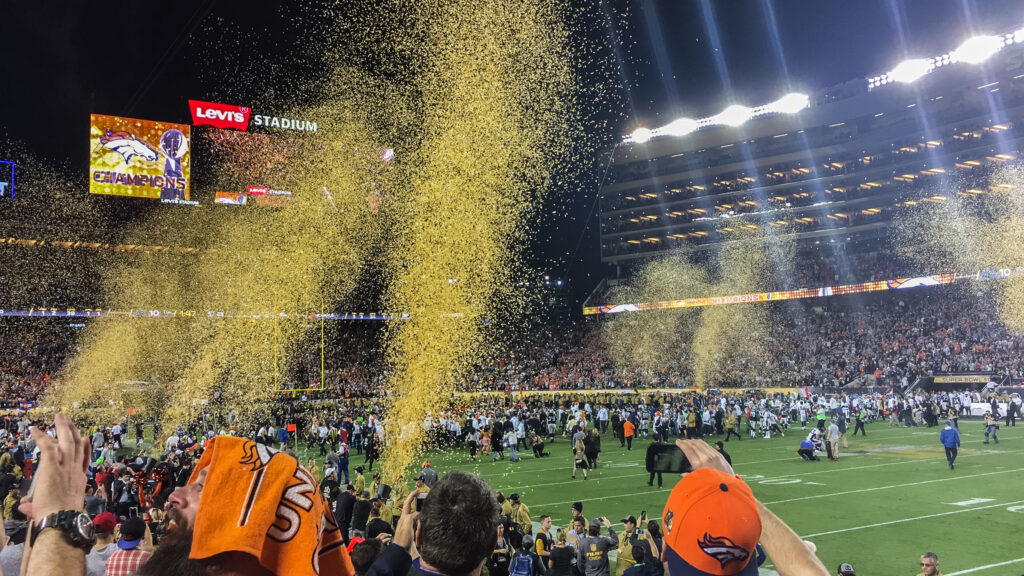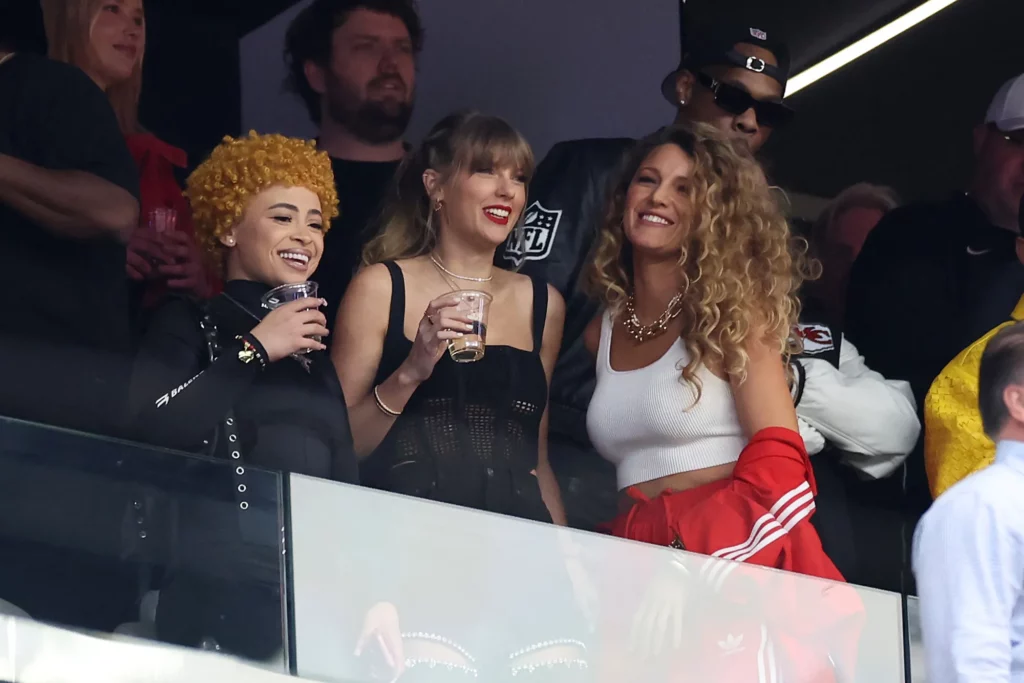The Super Bowl transcends mere athletic competition, evolving into a battleground for creative marketing prowess. Here, brands engage in a spectacle of public perception, crafting campaigns and commercials that linger in the collective consciousness long after the final whistle blows.
What distinguishes Super Bowl ads from typical marketing strategies, apart from their hefty $7 million price tag? Perhaps it’s the fact that a majority of surveyed adults in the US think of these ads as entertainment rather than promotional tactics.
Back in 2019, viewers devoted a staggering 641,000 hours to watching Super Bowl ads on YouTube during game day, marking a significant 58% surge from the previous year.Let’s dive into what makes the Superbowl the world’s premium marketing opportunity and take a look at some of the most influential campaigns while we’re at it.
Unprecedented Viewership:
The Super Bowl stands as a beacon of unparalleled viewership. It’s the optimal platform for brands to engage with a wide-ranging audience. Over the preceding half-decade, the event has maintained an impressive average viewership exceeding 100 million, attesting to its enduring popularity and broad appeal. Notably, the 2021 Super Bowl sustained this trend, commanding an average audience surpassing 96 million viewers.
This consistent influx of viewers underscores the Super Bowl’s status as a cultural phenomenon. It captivates audiences across demographics and geographic boundaries alike. For brands, this massive viewership presents a golden opportunity to showcase their products or services to a diverse and captive audience, maximizing exposure and potential impact. Thus, the Super Bowl’s remarkable ability to draw record-breaking crowds reaffirms its position as a premier marketing stage, offering unparalleled visibility and reach for brands seeking to make a memorable impression on a global scale.
Iconic Commercials:
Commercials have become an essential aspect of the Super Bowl. Advertisers fiercely compete for prime spots during the game. Brands are willing to invest millions of dollars for a brief moment in the spotlight, creating memorable ads that spark significant buzz and conversation long after the final whistle.
Take Google’s “Loretta” commercial from 2020, for instance. It struck an emotional chord, showcasing the compelling power of storytelling in advertising. Even after the game concludes, these commercials remain a topic of discussion, demonstrating their enduring impact on viewers. They go beyond mere product promotion, leaving a lasting impression that resonates with audiences far beyond game day.

The Halftime Show:
The Super Bowl halftime show is renowned for its star-studded lineup, drawing in millions of viewers and offering unparalleled exposure for the artists taking the stage. Beyond entertaining the audience, this halftime extravaganza serves as a platform for performers to unveil new music, announce upcoming tours, or showcase their latest projects. It’s a pivotal moment in the music industry calendar, where artists leverage the massive viewership to elevate their careers to new heights.
For example, in 2021, The Weeknd headlined the halftime show and delivered a performance that resonated with audiences worldwide. His electrifying set not only wowed fans but also garnered widespread acclaim from critics, cementing his status as a global superstar. The impact of such performances extends far beyond the Super Bowl itself, as they become defining moments in an artist’s career trajectory.
Social Media Impact
The Super Bowl is a powerhouse when it comes to stirring up chatter on social media platforms, sparking conversations and interactions among millions of users. Brands recognize this buzzworthy potential and strategically leverage social media to enhance their Super Bowl marketing endeavors. They seize the moment to engage with audiences in real time, amplifying the reach and impact of their campaigns.
A classic example of this occurred in 2019, when Oreo capitalized on a blackout during the game with a brilliantly timed tweet. This maneuver perfectly showcased the effectiveness of real-time marketing on social media. By staying agile and responsive, brands can seize fleeting opportunities to connect with their audience meaningfully, creating memorable moments that resonate long after the final whistle blows.
Sponsorships and Partnerships
The Super Bowl isn’t just a game; it’s a goldmine of sponsorship and partnership opportunities for brands eager to bask in its excitement and prestige. Whether it’s securing a coveted spot as an official sponsor or forming exclusive partnerships with halftime performers, brands have a multitude of avenues to align themselves with this iconic event. These relationships aren’t just about plastering logos everywhere; they’re strategic moves to boost visibility and relevance in the eyes of consumers.
Imagine the impact of being associated with the biggest sporting event in the country! From pre-game hype to post-game analysis, the Super Bowl offers an extended platform for brands to shine. Whether you’re a household name or an up-and-coming player, seizing these sponsorship and partnership opportunities can elevate your brand to new heights, solidifying your place in the hearts and minds of consumers.
Long-Term Impact
Looking beyond the excitement of the Super Bowl itself, the event holds the potential to leave a lasting impression on brand awareness and perception. Those unforgettable commercials and half-time performances? They’re not just fleeting moments; they can shape how consumers view a brand for years down the line.
Think about it: a clever ad or a show-stopping halftime performance can stick in people’s minds long after the game ends, influencing their purchasing decisions and brand preferences. And it’s not just about the flashy stuff, either. Strategic partnerships and sponsorships forged during the Super Bowl can foster long-term brand loyalty and affinity among consumers.
The Taylor Swift Revolution
Taylor Swift, the pop sensation turned marketing maestro, has undeniably left her mark on Super Bowl advertising. While she hasn’t performed at the halftime show (yet), her strategic moves have caused businesses to rethink their marketing strategies around the big game. Swift’s savvy use of social media and fan engagement has inspired brands to go beyond traditional commercials and embrace digital storytelling.

One notable example is her partnership with AT&T during the 2017 Super Bowl. AT&T premiered a series of commercials featuring behind-the-scenes footage of Swift’s music videos, creating buzz and excitement among her massive fan base. This excitement has only grown over the year, and it reached a crescendo in 2023. The images of Taylor cheering her boyfriend on from the crowd as he won the biggest game of the year have left Swifties in a frenzy. ‘
Impact Beyond the Stadium
Businesses are using this fever to their advantage. Despite the game’s stature, traditional Super Bowls haven’t influenced brick-and-mortar businesses because most people choose to stay home. However, Protagonist Beer, a brewery and pizzeria based in North Carolina organized a “Taylor Swift Party Extravaganza”. The party was scheduled to kick off at 3 p.m. and run until the start of the Super Bowl, at which point the establishment will transition into a more traditional viewing party for the game.
While Protagonist regularly hosts football viewings throughout the season, CEO and co-founder Mike Salzarulo devised this Swift-inspired event, featuring activities such as bingo, drink specials, bracelet-making, and a playlist filled with Taylor Swift’s music. The aim is to entice patrons to step out and enjoy the festivities at the brewery, offering a unique and engaging experience beyond the typical Super Bowl gathering.
Now that she’s dating Travis Kelce, her involvement in the Super Bowl has skyrocketed even further. Statistics show she was by far the most-showed celebrity during the Super Bowl live transmission. Businesses have learned to incorporate elements of Swift’s marketing playbook into their strategy and invest heavily in attracting Swifties. It’s very rare we see a pop culture icon make such huge waves in corporate America, and Taylor Swift may be the most influential artist of the last decade.
Mega-Succesful Campaigns
The Super Bowl may be just one day in the grand scheme of things, but the impact it has on brands can ripple out for years to come. It’s a powerful reminder of the enduring value of effective marketing and strategic brand partnerships. Let’s take a look at some of the most influential and effective marketing campaigns the Super Bowl has had.
Budweiser: Whassup?
The 2009 Doritos Super Bowl commercial, “Free Doritos,” was a stroke of marketing genius. It invited consumers to create their own ads for the chance to win $1 million and have their commercial aired during the Super Bowl. This crowdsourcing approach not only engaged Doritos fans but also generated buzz and anticipation leading up to the big game. By tapping into user-generated content, Doritos empowered its customers to become brand ambassadors, effectively turning them into advocates who eagerly shared and promoted their creations. This innovative campaign not only showcased the creativity of its fans but also cemented Doritos’ position as a beloved and forward-thinking brand.
Doritos: Free Doritos
The 2000 Budweiser commercial featuring the “Whassup” catchphrase was a groundbreaking marketing campaign that captivated audiences and became a cultural phenomenon. Its simplicity and humor struck a chord with viewers, making it memorable and widely recognizable. The campaign’s success stemmed from its relatable and conversational tone, which resonated with a broad audience. By incorporating the catchy phrase into everyday conversations, Budweiser transformed its brand into a pop culture icon and sparked widespread word-of-mouth marketing. This innovative approach not only increased brand awareness but also solidified Budweiser’s position as a leader in the beer industry, demonstrating the power of a clever and engaging advertising strategy.
Snickers: You’re Not You When You’re Hungry
In the electrifying 2009 Snickers Super Bowl commercial, the legendary Betty White stormed onto the football field, injecting the game with her trademark wit and charisma. Dressed in full football gear, she brought humor and hilarity to every play, captivating audiences with her spirited performance. Following the commercial’s broadcast, Snickers saw a remarkable surge in sales, with reports of candy bars flying off the shelves at unprecedented rates. Betty White’s dynamic presence undoubtedly stole the show, igniting a frenzy of excitement and laughter among viewers nationwide. Her unforgettable cameo cemented the commercial’s status as an iconic moment in advertising history, showcasing the power of star power and unforgettable storytelling.
Wendy’s — Where’s the Beef?
In 1984, Wendy’s launched its iconic “Where’s the Beef?” campaign during the Super Bowl, instantly becoming a cultural phenomenon. The humorous commercial, featuring an elderly woman peering into a hamburger bun to find a tiny patty, struck a chord with audiences and propelled Wendy’s into the spotlight. The catchphrase quickly entered the lexicon, symbolizing the quest for substance and authenticity in a world of empty promises. Over the years, Wendy’s has continued to leverage the success of the campaign, occasionally resurrecting the iconic slogan in various marketing efforts.
In subsequent Super Bowls, Wendy’s has maintained a presence with memorable ads, including the 2007 “Chili Can Be Served with Cheese and Onions” commercial and the 2018 “Iceberg” spot, reinforcing the brand’s commitment to quality and innovation. The enduring popularity of the “Where’s the Beef?” campaign highlights its enduring impact on advertising and its ability to resonate with audiences across generations.
Always — #LikeAGirl
The “Like a Girl” campaign by Always, which debuted during the Super Bowl, redefined gender stereotypes and empowered young girls worldwide. By challenging the negative connotations associated with doing things “like a girl,” the ad sparked conversations about gender equality and female empowerment. Its powerful message resonated with audiences, garnering widespread acclaim and sparking a social movement. Beyond the Super Bowl, the campaign has continued to thrive through various mediums, including social media, television, and print, inspiring countless girls to embrace their strengths and capabilities. Its enduring impact lies in its ability to challenge societal norms and instill confidence in future generations of young women.
The Super Bowl is a major example of how spectacle is still a successful marketing strategy. It has gone beyond just a sports event, and is so much more. Learn how to get the best out of the marketing tools at hand with EvolveDash, and go to the next level!

















